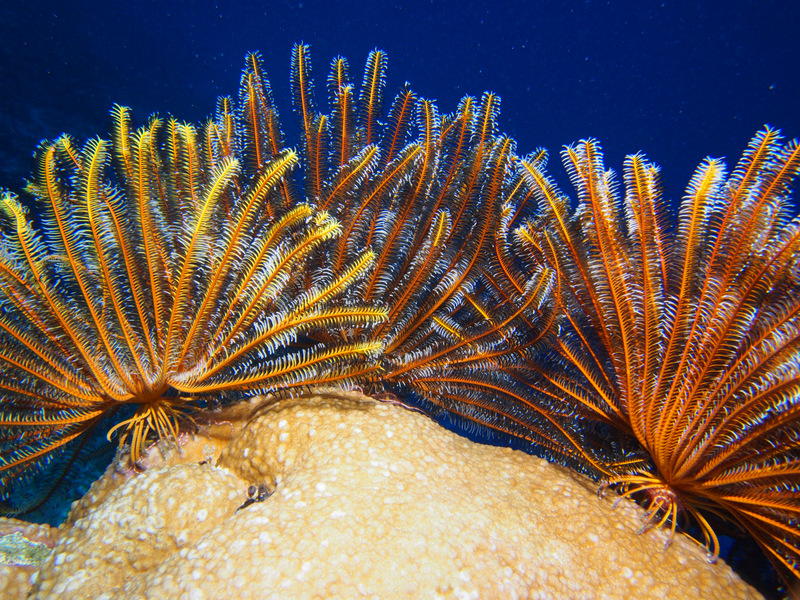As the dive team descended on our first dive in the northern atolls of New Caledonia, Pelotas Reef, it was apparent to all that this would be a challenging dive. The reason – current!

Sea Whips
The presence of strong currents adds considerable complexity to underwater work. Divers must work hard to stay in one location. Yet, while an inconvenience for the dive team, current is the life blood of many marine organisms. Plankton, small microscopic organisms suspended in the water column, are carried around the ocean or between nearby reefs.

Various Soft Corals.
Coral Reef Currents Deliver Plankton to Many Reef Creatures
Many of the organisms of the reef have specific adaptations that allow them to capture plankton from coral reef currents for food. Specially designed appendages grab and strain food items from the water as it flows past. Feather Stars (crinoids) are often found tucked up inside holes in the reef, but will creep out to exposed locations atop corals to feed. Here the current is highest, and the feather star spreads its many limbs to capture planktonic prey items as they are swept by.

Crinoids capture plankton from currents.
The Christmas Tree Worms burrow into the coral skeleton. All that can be seen are the brightly colored tree-like appendages that filter the water for food items as it passes. While corals derive much of their nutrition from photosynthesis of the symbiotic algae, they also feed on the plankton in coral reef currents.

Christmas Tree Worms, Spirobranchus giganteus, feed on plankton from currents.
Understanding the nature and role of coral reef currents remains one of the greatest challenges to coral reef science. Many sessile organisms are planktonic for some portion of their lifecycle. Currents facilitate dispersal of marine organisms from one reef to another. Later in this mission, we hope to see the production of planktonic coral larvae – coral spawn. Spawning events are usually timed with the lunar cycles. Such timing coincides with periods when tidal flow is at its highest, increasing the chances of successful dispersal.
Photos: 1-5 Ken Marks, 6 Andrew Bruckner


